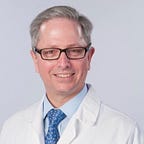What do TB and The Pandemic Have In Common?
Despite the time difference, there is a common thread in containment.
In the 18th, 19th, and early 20th centuries tuberculosis was one of the most prevalent and deadly diseases worldwide. It is an airborne infection with a long latency period — the time from infection until symptoms start when the person can spread the disease. Importantly, improvements in sanitation, isolation, contact tracing, and other public-health measures significantly reduced rates of tuberculosis even before the arrival of vaccinations and the development of antibiotics such as streptomycin. These measures essentially eliminated tuberculosis in developed countries. More recently antibiotic-resistant strains of tuberculosis have emerged, and once again public health measures are the mainstay in containing the spread of these new strains.
The story of the containment of TB and many other infectious diseases through public health measures lead to the formation of the Centers for Disease Control and Prevention (CDC) here in the United States. Public health measures, including disease monitoring, vector tracing, early warning systems for outbreaks, early detection, containment measures, and contact tracing were pioneered by the CDC, and this knowledge has been exported all over the world. This has led to the containment of infectious diseases including Ebola, swine flu, SARS, and many others, all of which could have resulted in global pandemics (and still might).
With airborne diseases, one of the best ways to decrease spread is to limit the ability of infectious droplets to leave one person and enter another. Social distancing and the lockdown of activities and businesses that promote viral spread are two important aspects of limiting airborne illnesses. However, the most effective measure we have to prevent airborne transmission is wearing a face mask.
There is a lot of misinformation and misunderstanding around the wearing of face masks. Surgeons and ICU workers wear face masks and face shields to protect them from the patient, not the other way around. Blood and other bodily fluids can splash and spray during operations and invasive procedures, and so doctors and nurses wear personal protective gear to keep from getting the disease from the patients. This is not the case with airborne viral infectious diseases.
A simple surgical or cloth mask does not protect the wearer from airborne viral particles. Only N95 or N99 respirators and face shields provide this type of protection. What surgical and cloth masks do is limit the amount of virus-laden particles that can escape from an infected individual when they talk, cough, or sneeze. These types of masks also decrease the distance particles that do escape can travel, decreasing the likelihood that others in the area will become infected. So, wearing a surgical or cloth mask protects those around us, they do not protect us.
Finally, it is important to understand that wearing a face mask has no deleterious effects on the wearer. Surgeons wear face masks for up to 12 or 15 hours at a time with no negative consequences. There are absolutely no negative health effects to wearing a face mask.
Everyone needs to wear a face mask when in the company of others, especially when they are in public. This is the most effective thing we can do to limit the spread of COVID-19.
Subscribe to James Goydos’ newsletter. Follow me on Good Men Project, LinkedIn, Instagram, Facebook, YouTube, Medika Life, and Twitter, too!
About James Goydos, M.D.
James Goydos earned his M.D. from Rutgers University and has over 20 years of experience as a Professor, Surgeon, and Clinical Trial Lead. He is a leading expert in melanoma research and a specialist in Surgical Oncology. Learn more at https://jamesgoydos.com
